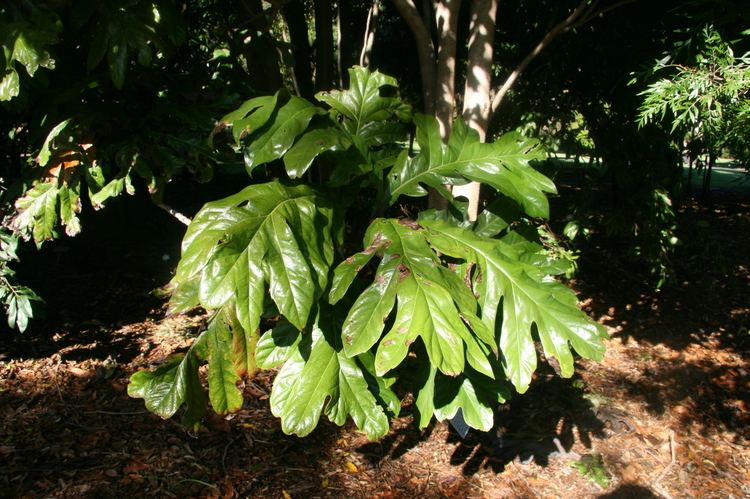Kingdom Plantae Family Proteaceae Scientific name Athertonia diversifolia | Order Proteales Genus Athertonia Rank Species | |
 | ||
Similar Hicksbeachia, Carnarvonia, Darlingia, Cardwellia, Hicksbeachia pinnatifolia | ||
Athertonia diversifolia, commonly known as Atherton Oak, is a small to medium-sized rainforest tree of the family Proteaceae found in northern Queensland, Australia. It is endemic to the Atherton Tablelands where it is widespread. A relative of the macadamia, it has potential as an ornamental tree and has an edible nut.
Contents
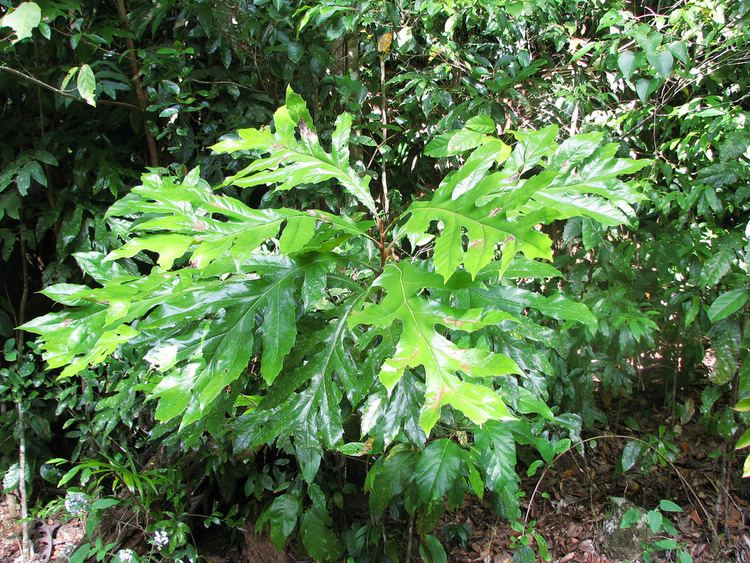
Taxonomy
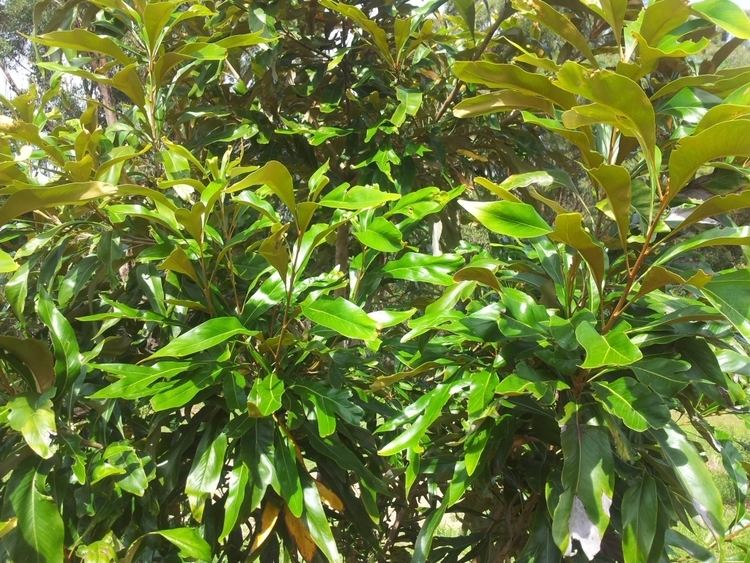
Athertonia diversifolia was first described by Queensland Government Botanist C.T. White in 1918, who gave it the specific name derived from the Latin diversi- "different" and folium "leaves", from the fact that different-shaped leaves may be found on the one plant. He placed it in the genus Helicia. The Dutch botanist Hermann Sleumer placed it in the genus Hicksbeachia in 1955, where it stayed until Johnson and Briggs placed it in its own genus although conceded it was related to the former genus. Thus, it is the only member of the monotypic genus Athertonia. Common names include Atherton almond, Atherton Oak, White Oak, or cream silky oak.
Description
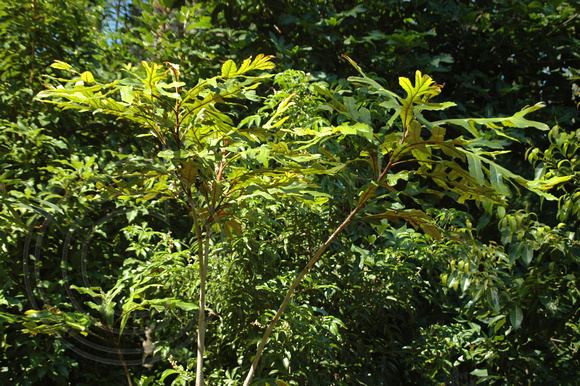
Athertonia diversifolia grows as a tree 8 to 30 m (26 to 98 ft) tall. The trunk may be buttressed and reaches a diameter of 30 cm (12 in). Juvenile leaves are a simple oblong shape with finely toothed margins but are replaced by large lobed intermediate leaves which reach 60 cm (23.5 in) long. The adult leaves are variable in shape, lobed or entire, 12–20 cm (4.5–8 in) long and 5–9 cm (2–3.5 in) wide. Young branches and new growth are covered in fine rusty hair. Occurring from March to June, the flowers are cream and brown in colour and borne on 15–34 cm (6–13.5 in) long racemes. The lens-shaped fruit is 3.6–4.1 cm (1.4–1.6 in) long by 3.3–3.8 cm (1.3–1.5 in) wide and 1.9–2.6 cm (0.75–1.02 in) thick, dark blue, containing a woody-shelled nut with a large edible and crunchy kernel, which ripen in spring.
Distribution and habitat
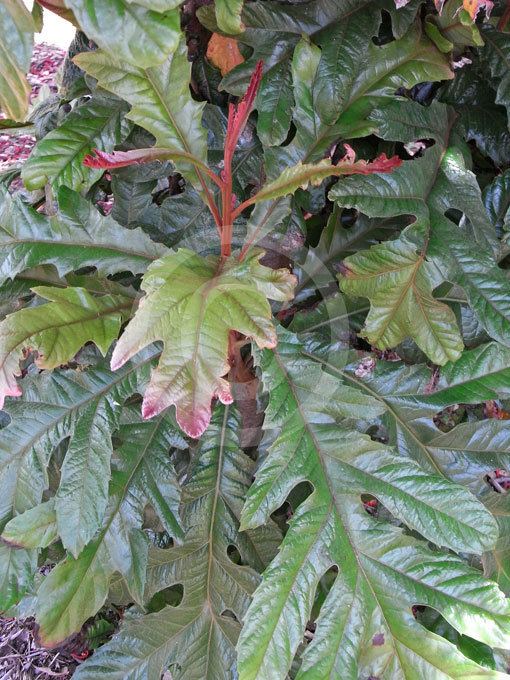
Athertonia diversifolia is found in north Queensland from Cape Tribulation south to Mt Bartle Frere. Its habitat is rainforest, generally from 700 to 1,150 metres (2,300 to 3,770 ft) in altitude. but is found at 400 m (1,300 ft) at Alexandra Creek. Much of its former habitat has been cleared. The soils are deep volcanic loams.
Uses

Atherton almond is cultivated to a limited extent for its edible nut, but makes a good specimen tree in large parks and has potential as an indoor foliage plant, or as a foliage plant in the cut flower industry. The species is readily propagated by seed.
Athertonia diversifolia is the floral emblem of the Atherton shire in north Queensland.
